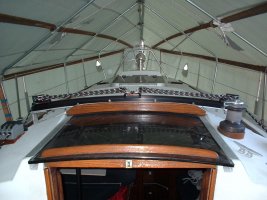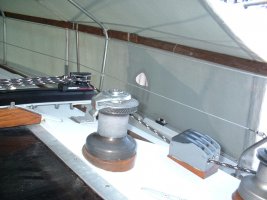Was curious if anyone has made any sort of configuration changes to their 34’ in running all lines aft into the cockpit for ease of single handling? I was looking into running all lines, (jib, main, spiniker halyards and first and second reef (separate tack and clew)) along with replace or remove the cam cleat Schafer traveler and mainsheets to cabintop rope clutches.
The Schafer traveler, although has no mechanical problems, requires leaving the cockpit to go forward and undo cam cleats to trim. Seeing that the 34’ came with four winches on the cabin top I though the forward winches would work nicely for trimming through the rope clutchs, allowing me to make adjustments without leaving the cockpit.
Cheers
The Schafer traveler, although has no mechanical problems, requires leaving the cockpit to go forward and undo cam cleats to trim. Seeing that the 34’ came with four winches on the cabin top I though the forward winches would work nicely for trimming through the rope clutchs, allowing me to make adjustments without leaving the cockpit.
Cheers


